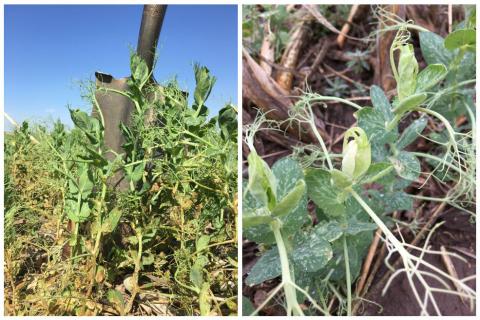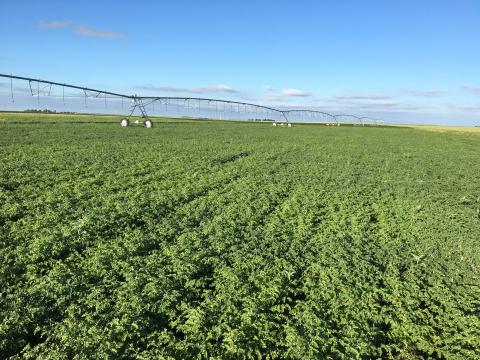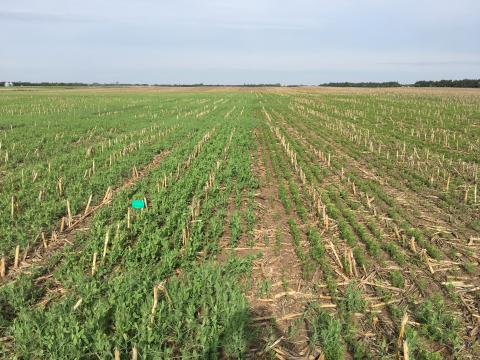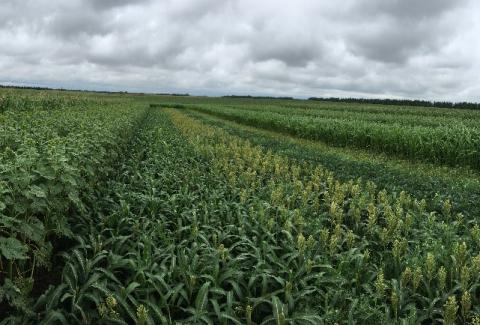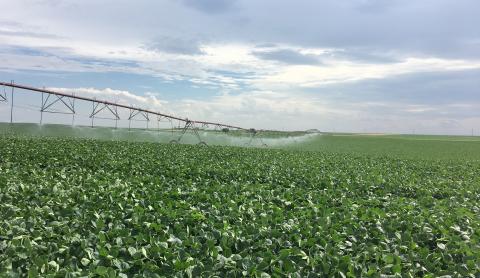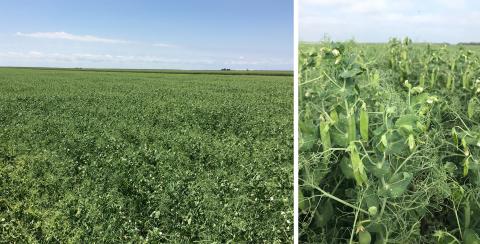Soybean Seeding Rates
April 18, 2019
Research from Nebraska farmers and Midwest universities suggests seeding rates for soybeans can often be decreased without affecting yield. These decreases could save growers $10 an acre in seed costs.
Field Pea Guide to Herbicide Carryover and Herbicide Efficacy
March 21, 2019
When integrating field peas into a crop rotation, herbicide carryover is one of the most important things to consider. This guide can help you plan your herbicide program to avoid potential crop injury due to carryover injury.
Yield and Water Use of Field Peas and Chickpeas Under Irrigation
March 21, 2019
This study, conducted in southwest Nebraska, investigated the feasibility of field pea and chickpea production under irrigation and evaluated their potential for water conservation in irrigated cropping systems.
Research Examines Water Balance of Field Peas, Chickpeas and Soybeans vs Fallow
February 21, 2019
This research compared fallow to field peas, chickpeas, and soybeans in terms of water balance, impact on next year’s wheat crop, and profitability. It was conducted near Grant in western Nebraska.
Double Cropping Field Peas with Cover Crops, Forages, and Short-Season Crops
January 9, 2019
Farmers throughout the Corn Belt may want to consider diversifying traditional corn and soybean rotations to increase agronomic sustainability and to spread financial risks associated with low market prices of corn and soybean. An alternative is a more diverse crop rotation using field pea (short-season grain crop) followed by cover crops, forages, or short-season crops (Figure 1).
Adoption of Yellow Field Pea: Replacing Summer Fallow with Field Pea and the Relationship between Planting Timing, Population, and Yield
January 9, 2018
How much will yellow field pea affect soil fertility and soil water content when replacing fallow in a wheat-corn-fallow rotation? This article from the 2019 Crop Production Clinic Proceedings.reports on 2018 research to address this question.
Seeding Practices and Nitrogen Management for Western Nebraska Soybean: What Matters and Why
December 18, 2018
This one-year study of soybean production in west central Nebraska looked at how adjustments in cropping practices affected various components of crop yield, showing possible areas where changes could increase profitability.
Nebraska Pulse Crops Expo Jan. 7 in Kearney
December 11, 2018
To learn about getting started with pulse crops or how to enhance your existing pulse production, don’t miss the 2019 Nebraska Pulse Crops Expo January 7 in Kearney. The program is free but registrations are needed by Jan. 2.
 Twitter:
Twitter: 
